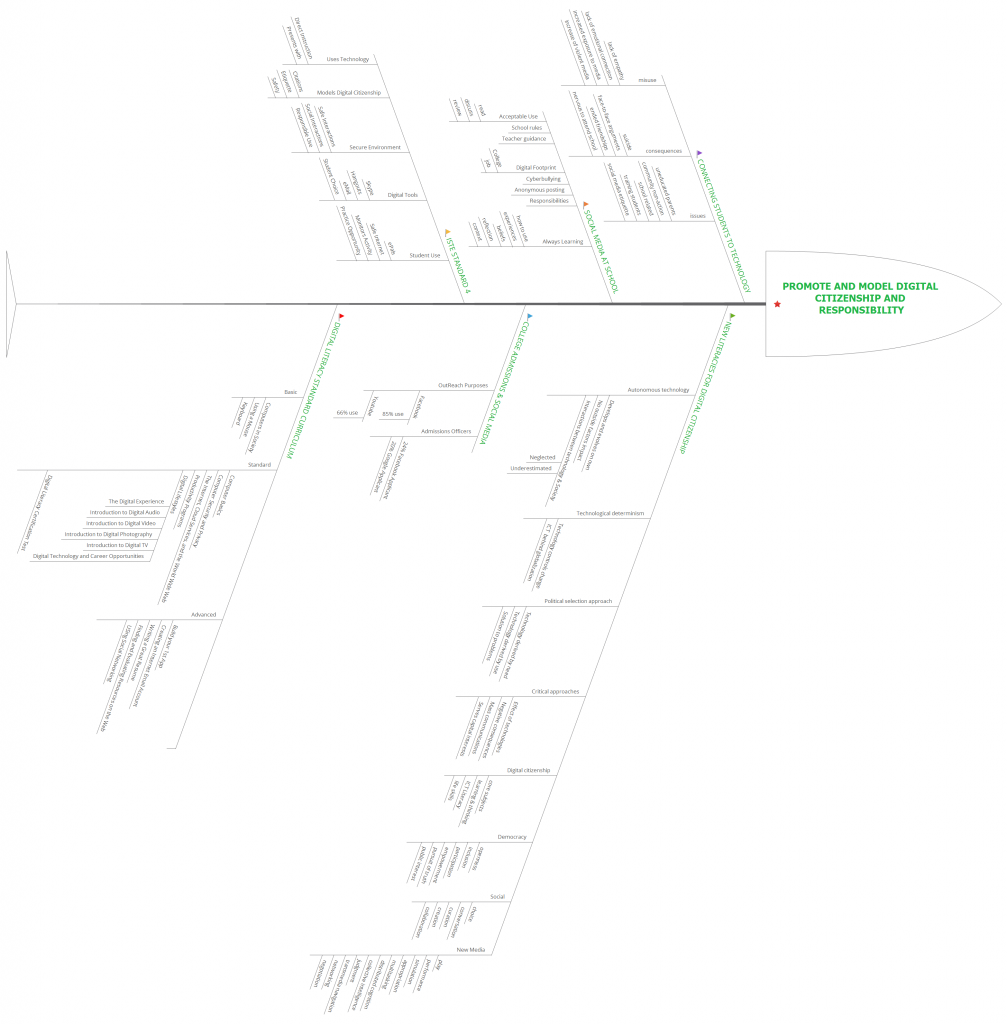
The past decade has seen an exponential increase in digital tools and opportunities, therefore there is a need for students to master a new set of life skills for behaving responsibly online. Even as they sit in the classroom, they are able to connect with people across the globe instantaneously via chats, email, blogs, social media, virtual conferences, comments and more. This new capability brings great opportunity but also some risk. Many of these connections happen with strangers, who could potentially pose danger. The anonymous nature of the internet can also create negative personal interactions, such as cyberbullying.
Contrary to popular belief, however, digital natives don’t pick up these skills through osmosis. It falls on parents and educators to teach them how. Just as a teacher would talk to students about etiquette and safety before they enter a public place on a school trip, so must they remind students of what’s expected of them online. Students are much more likely to understand appropriate, responsible technology use — when teachers model it on a regular basis. It is also important for all educators to spend time directly teaching and actively promoting digital citizenship. Keeping in mind that it’s not just one person’s job to teach digital citizenship in a school, but everyone’s shared responsibility.
The predictor of success for today’s students is their ability to access and use technology. Essential computing skills along with netiquette and safety must be emphasised so that they begin to understand digital citizenship and what is responsible use. It takes all of us, educators, parents and the community to actively promote and demonstrate appropriate norms and responsible use. Teachers need to know how to teach Digital Citizenship, and there are several different ways to help.
I believe that the Microsoft Imagine Academy’s Digital Literacy Curriculum is an appropriate resources, especially for high school and junior high to teach essential computing skills. The curriculum is good, and there are several units from Basic Skills to Advanced Skills. There are lessons that teach safe, legal and ethical use as well as teaching appropriate use: what programs would you choose to complete specific tasks. I have outlined the major units, but find that the majority of the Digital Citizenship curriculum is in the Standard Curriculum, in the Digital Lifestyles section where Digital Literacy is addressed. This resource has also options that allow the teacher the ability to use some of the curriculum without a computer.
XMind mapping software
Empowering Teachers and Students:
As a district who is rather behind the times, introducing 1:1 chromebooks next year, these are timely articles. The district’s discussion of a 1:1 initiative started with the struggle to control, monitor and regulate the use. I do not see how creating alternative assignments can in any way be comparable. Secondly, issues of misuse are met in our district with plans of removing students’ access to the device. The argument against this equates it to taking the student’s text book away, in addition to causing issues for the student in their other classes. They are unconvinced it is in the “school’s” best interest that the devices are allowed home with the students, but stay where they can be taken care of. I believe that there is a huge learning curve to begin with, and without the leadership sharing examples and giving resources to our schools about this transition, we will continue to hit walls and have concerns. There are many other districts around us that have sound a way to make sending home devices with students work, and we should be making these connections and asking the the hard questions.
GCP Connection with ISTE TS 4:
Promoting and modeling digital citizenship and responsibility is key to my GCP project. Creating a learning experience that allows students to engage with professionals in Computer Technologies career fields, using digital age communication and collaboration tools, is the essence of my project. Students need to be able to ask those real life questions, and become aware of how their actions today will affect them tomorrow. Throughout the presentations both the presenter and myself promote and model digital etiquette, and create connections to today’s work uses technology and information.
Resources:
Crompton, H. (2014, August 28). Know the ISTE Standards for Teachers: Model digital citizenship . https://www.iste.org/explore/articleDetail?articleid=142&category=Set-the-standard&article
Edutopia (2013). Nichole Pinkard on Digital Literacy (Big Thinkers Series) . Retrieved from www.edutopia.org
Ribble, M. & Miller, T.N. (2013). Educational leadership in an online world: connecting students to technology responsibly, safely, and ethically. Journal of Asynchronous Learning Networks, 17(1), pp. 137-145. http://files.eric.ed.gov/fulltext/EJ1011379.pdf
Simsek, E. & Simsek A. (2013). New literacies for digital citizenship. Contemporary Educational Technology, 4(2), pp. 126-137. http://files.eric.ed.gov/fulltext/ED542213.pdf

Fear of student misuse is not an uncommon feeling among districts, and often reflects a lack of preparedness on the district’s part. I like your suggestion to partner with neighboring districts to determine a plan of action. If administration would be open to problem-solving challenges others have faced (rather than simply avoid them), they might be more willing to trust students with the devices. Further, what conversations are being had among teachers regarding digital citizenship? When we empower teachers with the knowledge to effectively model appropriate use with students, they can then empower their students. It all comes down to effective communication and modeling/training within the district community.